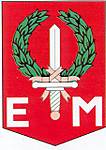Hi all,
Decided to start being proactive by looking at the railway track kit from Miniart – I still need to determine if their ‘European Gauge’ track is okay to use, as-is, for a British setting.
The box art (top and one side) is the only guide to painting that you get with the kit (see image below).

The parts come in a reasonably sturdy lidded box, inside of which they are all contained in a single polythene bag along with a separate single sheet with the instructions printed in black-and-white on one side (see images below).


Inside the bag are 8# identical light grey plastic sprues (see images below).


The timber sleepers have some very subtle wood grain effect on the top surface...it’s nicely done but, if anything, it’s too fine for my liking (see image below),

.

You can see above how the grain in each sleeper is different, however, the four vertical surfaces are devoid of any engraving (see image below). I guess on a perfectly laid track this wouldn't be an issue as the sleepers will be buried in the ballast, however, in the real world I doubt that would be the case.

I therefore decided to roughen up the existing grain and add grain to the four blank sides (see comparison images below). This is time consuming as there is a total of 40# sleepers (not sure if they’ll all be used on this build), however, it does mean that each sleeper will be slightly different, unlikely to get a repeated pattern, and it also means the ballast can be laid unevenly, which I feel will look more realistic. I have also used a thin wash of black to help show the difference.






Only another 35# to go,

!
Not sure whether I should continue the build in here, or should I create a new log specifically for the build...any thoughts?
Please feel free to comment as you see fit.
Cheers,

,
G
,
 We are here to help each other ,aren't we?
We are here to help each other ,aren't we?























